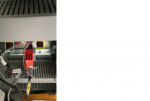Hello
I have my device ( protocol convereter 24VDC) mounted on Din-rail in panel . this device is communicating on RS232 cable ascii communication with a VFD/Torque meter .
Now suddenly my device got damged i.e powered OFF. So what should be the issue ? I already damaged 3 devices ,
Is this grounding issue ?is any surge voltage is coming which is affecting my device. How I can check identify this ?
what care I should take while grounding connections here?
Right now complete panel has common grounded -ve supply.
I have my device ( protocol convereter 24VDC) mounted on Din-rail in panel . this device is communicating on RS232 cable ascii communication with a VFD/Torque meter .
Now suddenly my device got damged i.e powered OFF. So what should be the issue ? I already damaged 3 devices ,
Is this grounding issue ?is any surge voltage is coming which is affecting my device. How I can check identify this ?
what care I should take while grounding connections here?
Right now complete panel has common grounded -ve supply.







